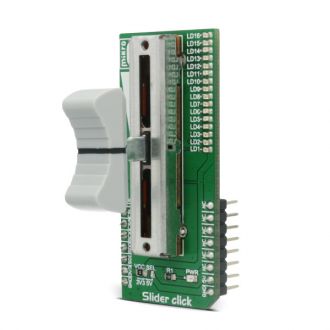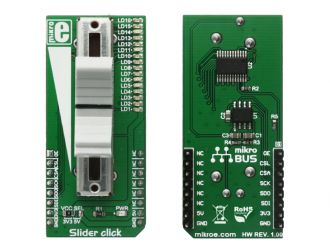
We strongly encourage users to use Package manager for sharing their code on Libstock website, because it boosts your efficiency and leaves the end user with no room for error. [more info]

Rating:
Author: MIKROE
Last Updated: 2018-01-18
Package Version: 1.0.0.0
mikroSDK Library: 1.0.0.0
Category: ADC
Downloaded: 6722 times
Not followed.
License: MIT license
Slider click uses SPI bus communication to converts analog input voltage (VCC) to digital output value and shows this result on LED and USB UART terminal. Value of analog voltage depends on the slider position.
Do you want to subscribe in order to receive notifications regarding "Slider click" changes.
Do you want to unsubscribe in order to stop receiving notifications regarding "Slider click" changes.
Do you want to report abuse regarding "Slider click".


Examples Description
This example shows how to read ADC value from MCP3551, and usage of LED Driver MAX6969 via SPI. When user changes the position of the slider, the LEDs on the click will turn ON and OFF accordingly.
The application is composed of two sections :
void applicationInit()
{
// READ ADC MCP3551
adcValue = MCP3551_Read() / DIVIDER;
// RECALCULATE VALUE
if (adcValue > 99)
{
adcValue = 100;
}
adcValue = adcValue / 6;
// SHOW MEASUREMENTS USING SLIDER BARGRAPH
bargraph( adcValue );
}
Other MikroElektronika Libraries used in the example: